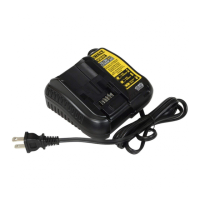18
ENGLISH
STORAGE
Engine
Consult the engine instruction manual for the recommendations
forstorage.
To Prevent Fuel-Related Problems
1. Add Ethanol Shield™ fuel stabilizer following the
manufacturer’s instructions. When adding a petrol stabilizer,
fill the fuel tank with fresh petrol. If only partially filled, air
in the tank will promote fuel deterioration during storage.
If you keep a container of petrol for refueling, be sure that it
contains only freshpetrol.
2. After adding a petrol stabilizer:
a. Connect the cold water source to pump inlet, turn on
cold water source and squeeze the spray gun trigger for
approximately 30 seconds or until a steady stream of
water ispresent. Release the spray guntrigger.
b. Start pressure washer/engine. See Starting for the
correct procedure. Run the engine outdoors for 10
minutes to be sure that treated petrol has replaced the
untreated petrol in thecarburetor.
3. Turn the fuel valve to the OFFposition.
4. Continue to run the engine until it stops from the lack of
fuel in the carburetor fuel bowl. Running time should be less
than 3minutes.
5. Turn off the cold watersource.
Pump
The manufacturer recommends using SIMPSON® /
POWERWASHER™ Pump Guard or equivalent when storing the
unit for more than 30 days and/or when freezing temperatures
are expected. SIMPSON® / POWERWASHER™ Pump Guard is
environmentallyfriendly.
NOTE: Using pump guard helps provide proper lubrication
to the internal seals of the pump regardless of temperature
orenvironment.
NOTICE: Risk of property damage. Use only SIMPSON®
/ POWERWASHER™ Pump Guard or equivalent. Other
products could be corrosive and/or contain alcohol which
may cause pumpdamage.
1. Turn off pressure washer and disconnect hoses frompump.
2. Unscrew bottle valve from Pump Guard bottle and
removeseal.
3. Screw bottle valve back ontobottle.
4. Attach bottle to water inlet ofpump.
5. Squeeze bottle to inject contents intopump.
WARNING: Use Manual Mode Start-up Procedure
(without battery) instructions. Do not installbattery.
6. With the engine ON/OFF switch in the OFF position,
simultaneously pull starter rope and squeeze bottle. Repeat
until protector fluid exits pump outlet. NOTE:This step may
require twopeople.
Pressure Washer
WARNING: Risk of Damage. DO NOT store battery pack
in pressure washer when not in use. Remove battery pack
after everyuse.
1. Shut down the pressure washer. See Shutting Down for the
correctprocedure.
2. Drain all water from high pressure hose, coil it and store it in
cradle of the pressure washerhandle.
3. With nozzle pointed down and the spray gun and wand in a
vertical position, squeeze spray gun trigger to drain all water
from spray gun and wand. Store in spray gunholder.
4. Store chemical/soap hose so it is protected fromdamage.
NOTICE: Risk of property damage. Always store and
transport unit in an uprightposition.
Accessories
DANGER: Risk of fluid injection. When using replacement
lances or guns with this pressure washer, do not use a
lance and/or lance/gun combination that is shorter in
length than what was provided with this pressure washer
as measured from the nozzle end of the lance to the
guntrigger.
WARNING: The use of any other accessory not
recommended for use with this pressure washer could be
hazardous. Use only accessories rated equal to or higher
than the rating of the pressurewasher.
Consult your dealer for further information on the
appropriateaccessories. If you need assistance in locating any
accessory for your tool, please contact the FNA Group at AUST
1800 841 749 / NZ 0800 467813.
Repairs
Battery and charger: The charger and battery pack are
notserviceable. For all information regarding the battery pack or
charger, contact us at:
Tel: Aust 1800 338 002
Tel: NZ 0800 339 258
www.dewalt.com.au
www.dewalt.co.nz
Pressure washer and all other concerns: For product, service
or warranty information contact us at:
Tel: Aust 1800 841 749
Tel: NZ 0800 467 813
www.dewaltpw.com
Protecting the Environment
Separate collection. Products and batteries marked
with this symbol must not be disposed of with normal
householdwaste.
Products and batteries contain materials that can
be recovered or recycled reducing the demand for raw
materials. Please recycle electrical products and batteries
according to local provisions. Further information is available at
www.2helpU.com.

